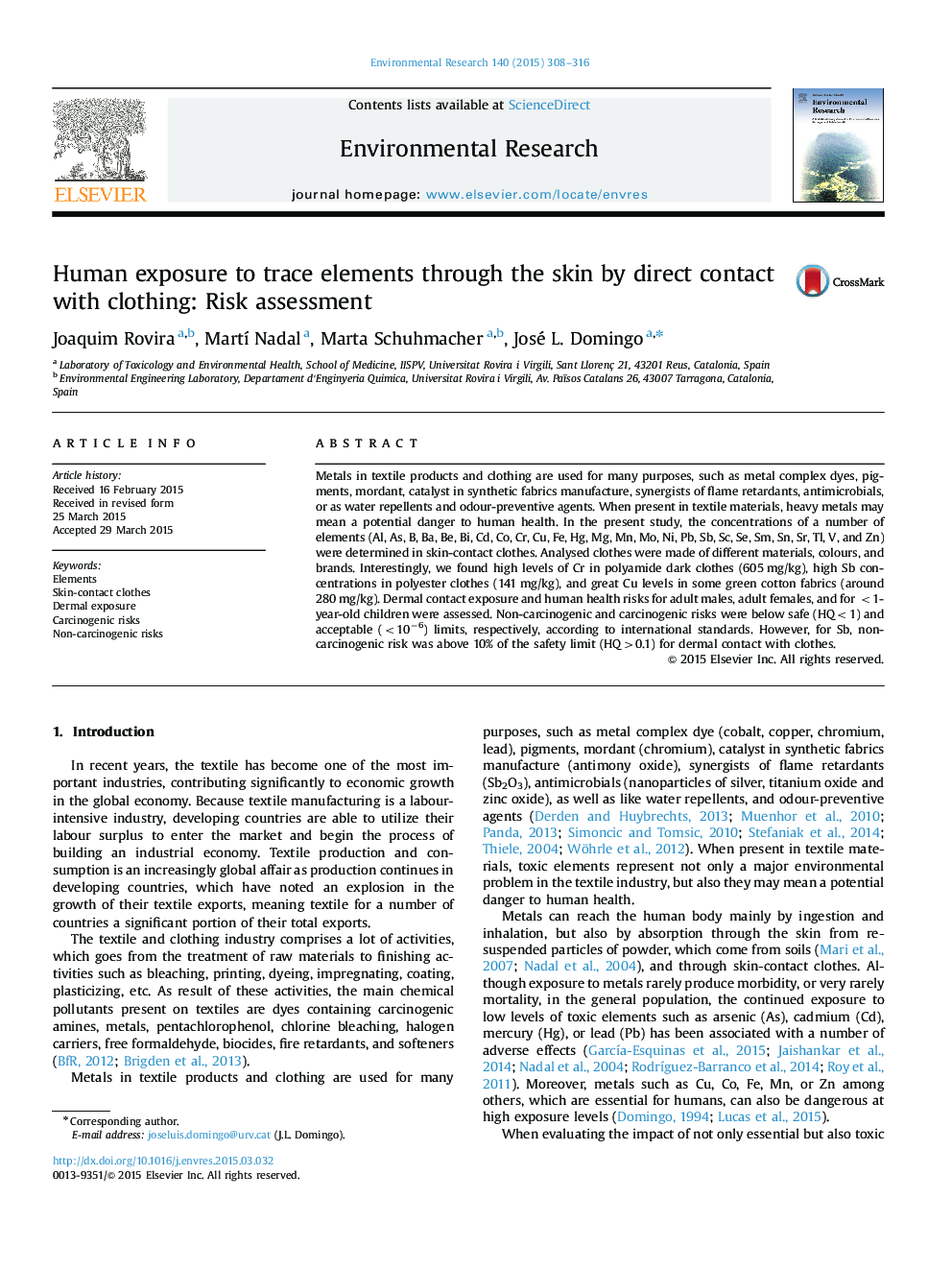| Article ID | Journal | Published Year | Pages | File Type |
|---|---|---|---|---|
| 6351985 | Environmental Research | 2015 | 9 Pages |
Abstract
Metals in textile products and clothing are used for many purposes, such as metal complex dyes, pigments, mordant, catalyst in synthetic fabrics manufacture, synergists of flame retardants, antimicrobials, or as water repellents and odour-preventive agents. When present in textile materials, heavy metals may mean a potential danger to human health. In the present study, the concentrations of a number of elements (Al, As, B, Ba, Be, Bi, Cd, Co, Cr, Cu, Fe, Hg, Mg, Mn, Mo, Ni, Pb, Sb, Sc, Se, Sm, Sn, Sr, Tl, V, and Zn) were determined in skin-contact clothes. Analysed clothes were made of different materials, colours, and brands. Interestingly, we found high levels of Cr in polyamide dark clothes (605Â mg/kg), high Sb concentrations in polyester clothes (141Â mg/kg), and great Cu levels in some green cotton fabrics (around 280Â mg/kg). Dermal contact exposure and human health risks for adult males, adult females, and for <1-year-old children were assessed. Non-carcinogenic and carcinogenic risks were below safe (HQ<1) and acceptable (<10â6) limits, respectively, according to international standards. However, for Sb, non-carcinogenic risk was above 10% of the safety limit (HQ>0.1) for dermal contact with clothes.
Related Topics
Life Sciences
Environmental Science
Health, Toxicology and Mutagenesis
Authors
Joaquim Rovira, Martà Nadal, Marta Schuhmacher, José L. Domingo,
